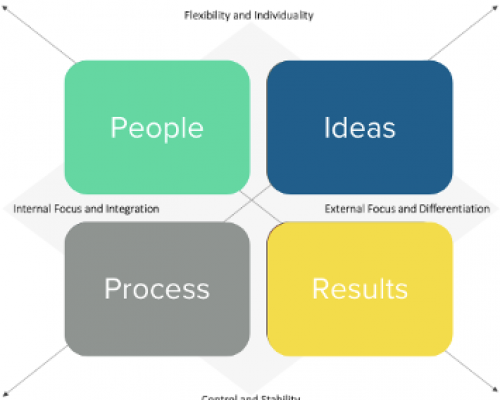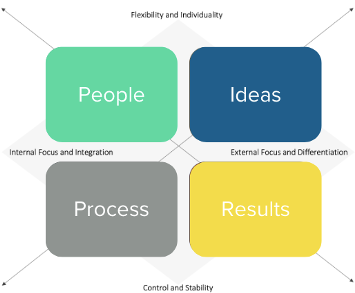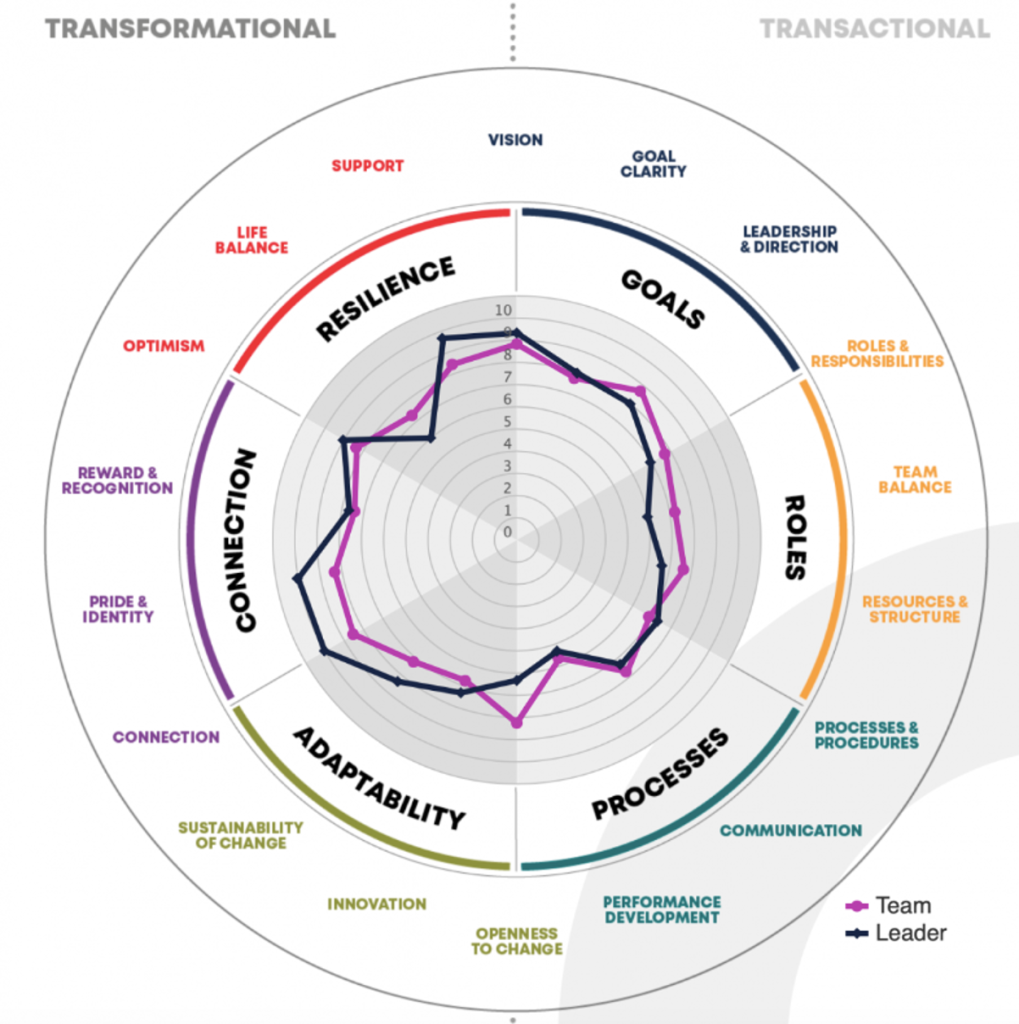Culture and Climate: Insights and strategies to enhance performance

Leadership within an organisation is significantly impacted by two key factors: culture and climate. Organisational culture is a foundation of shared values and practices, while organisational climate is about the everyday environment experienced by leaders and employees. Organisations that can grasp and utilise these aspects can improve their leadership and overall performance.
This blog will explore the critical interplay between organisational culture and climate, offering actionable insights and strategies to enhance leadership efficacy and overall performance within your company.
The Competing Values Framework (CVF) (Quinn & Rohrbaugh, 1983) provides a valuable perspective for understanding organisational culture, dividing it into four key areas: people, results, ideas, and processes. While companies may vary in their emphasis on each of these elements, it’s crucial to recognise that striving to excel in all areas simultaneously can be counterproductive. An organisation attempting to be everything to everyone risks losing its distinct identity and effectiveness. Where does your company sit on this framework? Where do you need to be to achieve the results you desire?

Understanding your organisation’s culture is imperative, but it can be an ethereal idea and be slow to change or implement. Therefore, organisational climate can be a good focus as it offers immediate opportunities for leadership enhancement. A positive climate fosters open communication, employee engagement, and a sense of purpose, all of which are essential for effective leadership. Leaders can directly influence climate through their actions, decisions, and the environment they create for their teams.
The Performance Climate System (PCS) model is instrumental in diagnosing and improving the organisational climate. It helps leaders understand the current state of their team’s environment and identify areas for improvement.

To enhance your organisational climate, actionable strategies tailored to the PCS model’s dimensions can drive impactful change:
- Goals: Implement a goal-setting workshop where team members can collaboratively define and align on clear, measurable objectives that resonate with both individual roles and the company’s vision.
- Roles: Develop a role-clarity matrix that delineates responsibilities, expectations, and growth paths for each position, ensuring every team member understands their contribution to the organisation’s success.
- Process: Introduce process-mapping sessions that involve team members in optimising workflows, identifying inefficiencies, and establishing clear procedures for common tasks.
- Adaptability: Set up challenges where teams have to solve unexpected problems on the spot. This encourages quick thinking and flexibility.
- Connection: Organise events, team building days or activities to build trust and interpersonal connection
- Resilience: Start ‘Comeback Conversations’ where team members share past challenges and how they overcame them, helping everyone learn resilience from each other’s experiences.
In the implementation phase, it’s crucial to set specific, measurable targets that align with the desired climate outcomes. Crafting detailed action plans and fostering active participation across the organisation ensures an aligned shift towards climate transformation. Leaders must not only endorse these initiatives but visibly lead by example, demonstrating the behaviours and attitudes that reflect the new climate standards.
Continual monitoring of climate interventions through the PCS model is key to understanding their effectiveness. This ongoing evaluation allows for adjustments that keep the momentum of positive change. To sustain these improvements, it’s essential to embed them into daily operations, ensuring that a positive climate becomes the norm, not the exception.
The journey to a thriving organisational climate is continuous and demands commitment at every level. With strategic implementation and diligent monitoring, the PCS model can guide leaders in cultivating an environment where excellence is nurtured, and innovation flourishes.
At Tribus People, we help build a positive workplace culture where good people thrive and align organisational and personal goals around a clear and shared vision of the future.
Reference List
Quinn, R.E. and Rohrbaugh, J., 1983. A Spatial Model of Effectiveness Criteria: Towards a Competing Values Approach to Organizational Analysis. Management Science, [e-journal] 29(3), pp.363-377.
SHARE: